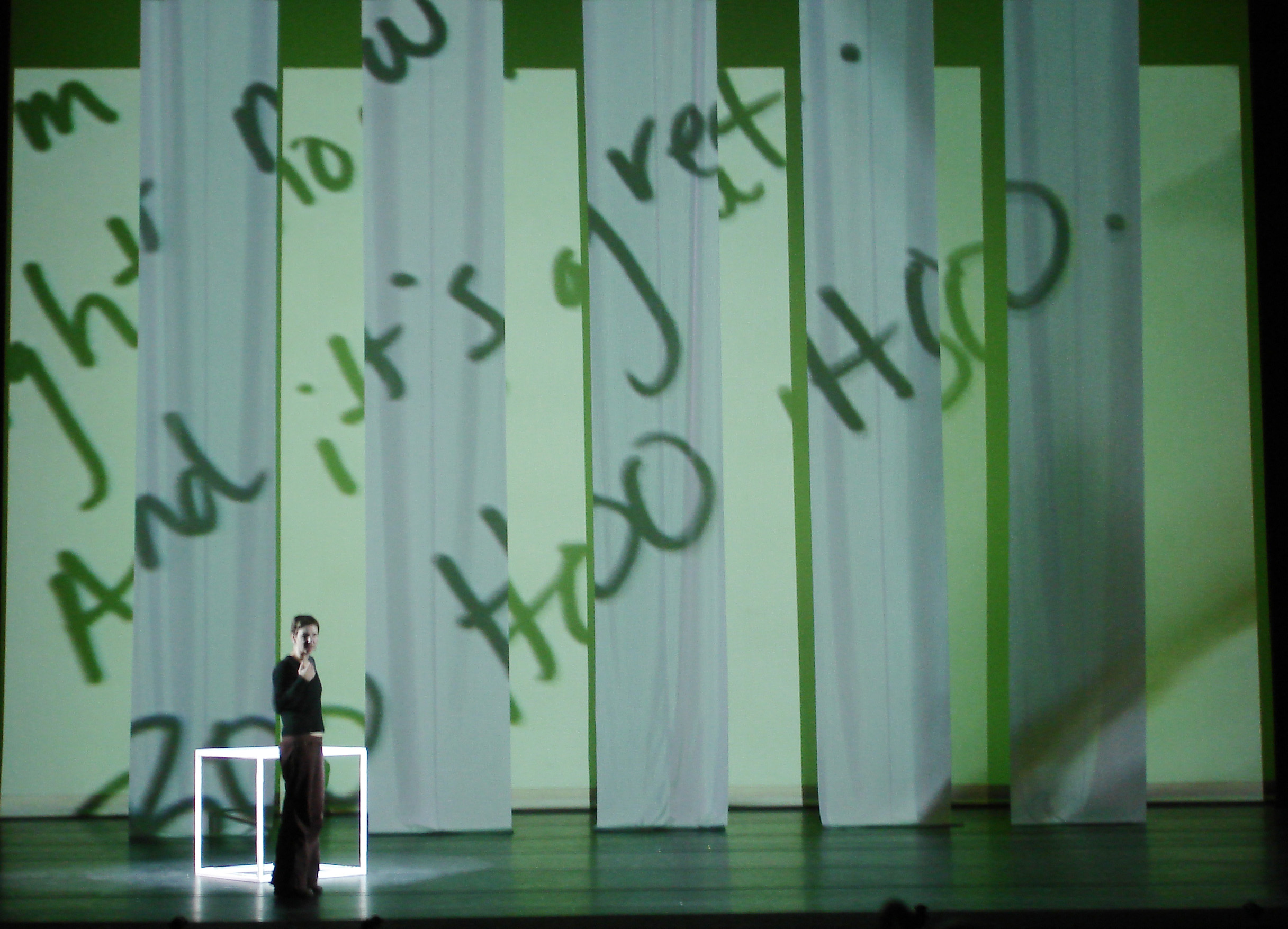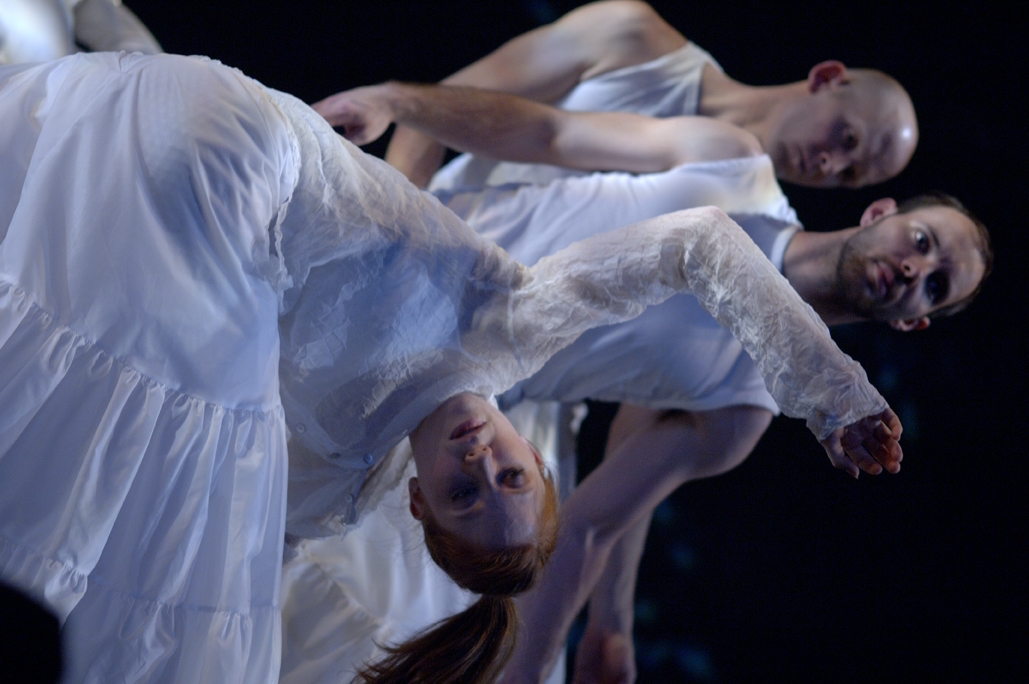Ferocious Beauty: Genome (2006)
“…beautiful, richly imaginative, hugely ambitious… a seamless blend of dance, music, ingenious storytelling, video and special effects… captivating, surprisingly funny, intensely moving, thought-provoking.”
– The Chicago Sun-Times
Why make a dance about genomic science?
Because of what art does best: it nudges open the doors of perception, inviting individuals to locate their feelings in the context of a larger subject. Liz’s evening-length work Ferocious Beauty: Genome created opportunities for people to think about genetic research in an accessible, creative and thoughtful way.
Because of the collaborative wisdom integral to the project, Ferocious Beauty: Genome did more than provide an arts experience. It also helped to restore the imaginary rift between art and science, and by doing so celebrated the commitments shared by both fields: to provide insights for understanding – and for making positive contributions to – our world.
On the stage, Ferocious Beauty: Genome integrated elements of dance and theater with state-of-the-art recorded and live-feed video and a multi-channel soundscape. The performance took place in two acts. The first included a series of scenes emphasizing the awe and rigor of genetic discovery through vignettes about specific research subjects. This provided the audience with basic knowledge through videos of scientists, text, and dance.
It is also where the figure of Gregor Mendel – the father of modern genetics – was introduced as a character through both live performance and in video, in which he tends to his pea plants. Contemporary scientists, also shown in videotaped segments, engage in a virtual dialogue with him as they answer the question, “What would you tell Mendel if you were to meet him now?”
Inspiration
The idea for the work was sparked in the spring of 2002, when Liz was invited to Seattle to lead a public discussion on an exhibit entitled Gene(sis) at the Henry Art Gallery there.
The visual art in the museum’s show revolved around genetic research – its implications, its discoveries, and its potential. The museum sent Liz a background package, which provoked Liz’s thinking: “I have a teenage daughter, and the information made me wonder about the choices her generation might face,” she recalls. “When I was asked during a radio interview what my next project would be, I found myself saying I’d like to develop a project on the genome.”
Research

Research
Process

Project Collaborators
Collaborators include representatives of such institutions as NIH, John Hopkins University, Stanford University, Howard University, the Genetics and Public Policy Center, the Institute for Genomic Research and the U.S. Department of Energy. Scientists and scholars have not only advised on content, but also contributed choreographic and narrative ideas, as scientists appear in the staged work through projected video segments. They have also helped to leverage media coverage and design interactive programming such as town hall discussions on bioethics and art/science workshops.
Presenting & Funding Notes
Ferocious Beauty: Genome premiered at Connecticut’s Wesleyan University on February 3, 2006. It was performed across North America at venues including Yerba Buena Center for the Arts in San Francisco, Duke University, the Museum of Contemporary Arts in Chicago, the Harbourfront Centre in Toronto, and the Mayo Clinic Convention Center.
Ferocious Beauty: Genome’s lead commissioners were The Center for the Arts at Wesleyan University and The Flint Cultural Center Corporation.
Ferocious Beauty: Genome received leadership support from the Nathan L. Cummings Foundation, the Dallas Morse Coors Foundation and the National Endowment for the Arts. Additional funding came from the Doris Duke Fund for Dance of the National Dance Project, a program administered by the New England Foundation for the Arts with funding from the National Endowment for the Arts and the Ford Foundation, and from Leveraging Investments in Creativity (LINC). Additional developmental partners were the Museum of Contemporary Art in Chicago, Massachusetts Museum of Contemporary Art, Duke Performances at Duke University, Workspace for Choreographers, Maryland Institute College of Art and the Applewood Estate of the Ruth Mott Foundation. The Genetics and Public Policy Center at Johns Hopkins University provided essential support and guidance.
